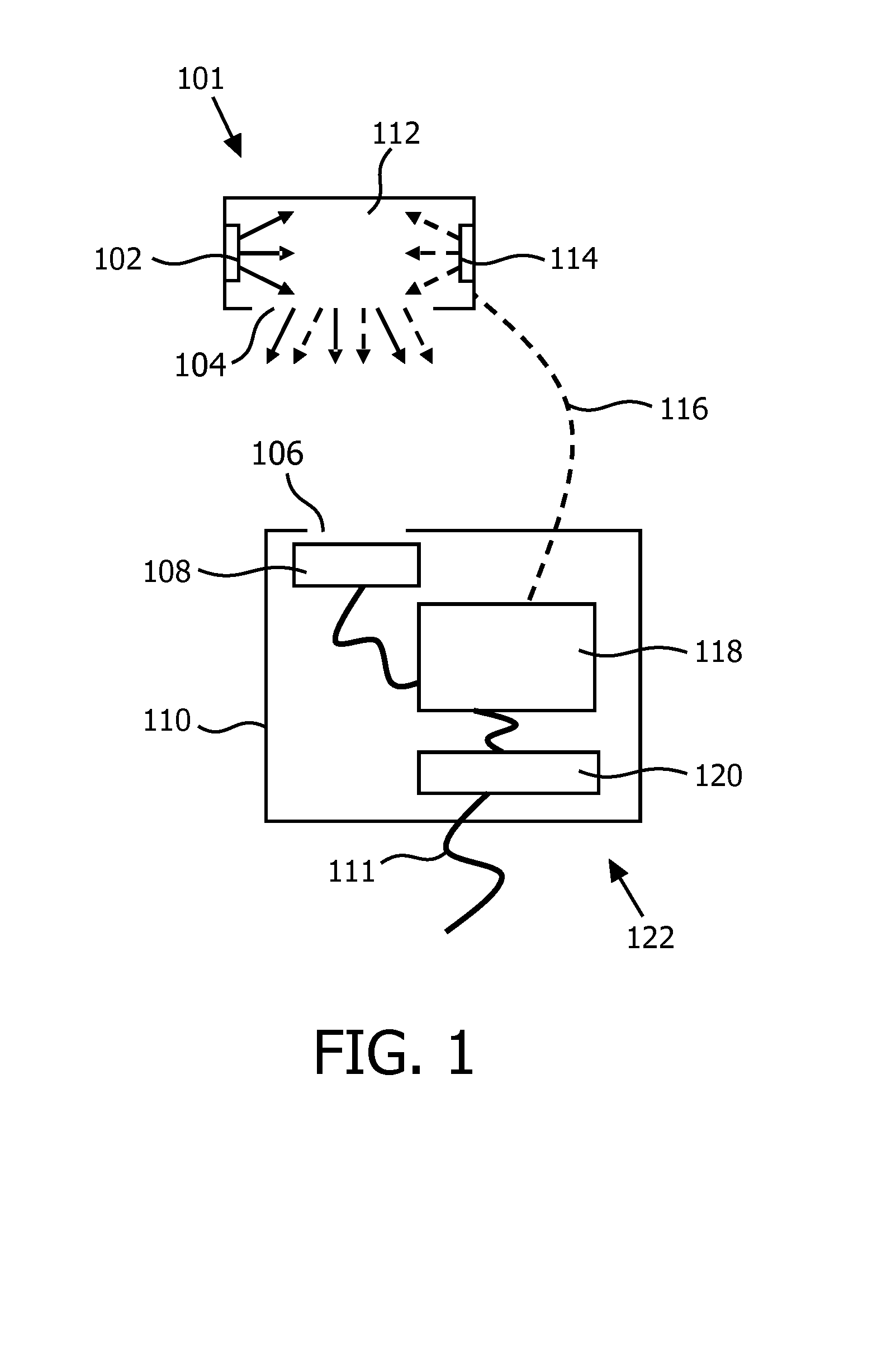A color tunable lamp including a control device with a relative flux sensor
a control device and sensor technology, applied in the field of flux sensors, can solve the problems of limiting the design of light sources comprising a plurality of light emitters, the method and system the cost of the calibrated light intensity sensor of the cited patent application, so as to achieve the effect of less cos
- Summary
- Abstract
- Description
- Claims
- Application Information
AI Technical Summary
Benefits of technology
Problems solved by technology
Method used
Image
Examples
first embodiment
[0067]A first embodiment is shown in FIG. 1. A light source 101 is shown which comprises a first Light Emitting Diode (LED) 102 and a second LED 114. The first LED 102 emits light of a first color into a light mixing chamber 112 of the light source 101. The second LED 114 emits light of a second color into the light mixing chamber 112. The second color is different from the first color. The light mixing chamber 112 comprises a light exit window 104. Light which is a mixture of the first color and the second color is emitted through the light exit window 104 into the ambient of the light source 101.
[0068]A relative flux sensor 122 is shown as well. The relative flux sensor 122 comprises a light input 106 through which light may enter the relative flux sensor 122 to impinge on a color point sensor 108. The color point sensor 108 is coupled to a sensor controller 118 of the relative flux sensor 122. The sensor controller 118 is coupled to the output means 120.
[0069]The color point sens...
second embodiment
[0100]Alternatively, in a second embodiment, the dimming factors D1, D5 and D9 are 100% and the dimming factors D2, D3, D4, D6, D7, and D8 are 0%. The sensor controller 418 is further arranged to provide a fifth signal to the light source 402. The fifth signal comprises the dimming factors D1, D5 and D9. When the light source 402 emits according to the fifth signal, the sensor controller 418 receives the measuring signal from the color point sensor 108 representing a fifth color point. The sensor controller 418 is arranged to calculate the first ratio between the maximum flux of the first OLED 401 and the maximum flux of the second OLED 403 on the basis of the dimming factors D1 to D9 and the first color point, the second color point, the fourth color point and the fifth color point. Additionally, the sensor controller may be arranged to calculate the second ratio between the maximum flux of the first OLED 401 and the maximum flux of the third OLED 412 on the basis of the dimming fa...
PUM
 Login to View More
Login to View More Abstract
Description
Claims
Application Information
 Login to View More
Login to View More - R&D
- Intellectual Property
- Life Sciences
- Materials
- Tech Scout
- Unparalleled Data Quality
- Higher Quality Content
- 60% Fewer Hallucinations
Browse by: Latest US Patents, China's latest patents, Technical Efficacy Thesaurus, Application Domain, Technology Topic, Popular Technical Reports.
© 2025 PatSnap. All rights reserved.Legal|Privacy policy|Modern Slavery Act Transparency Statement|Sitemap|About US| Contact US: help@patsnap.com



